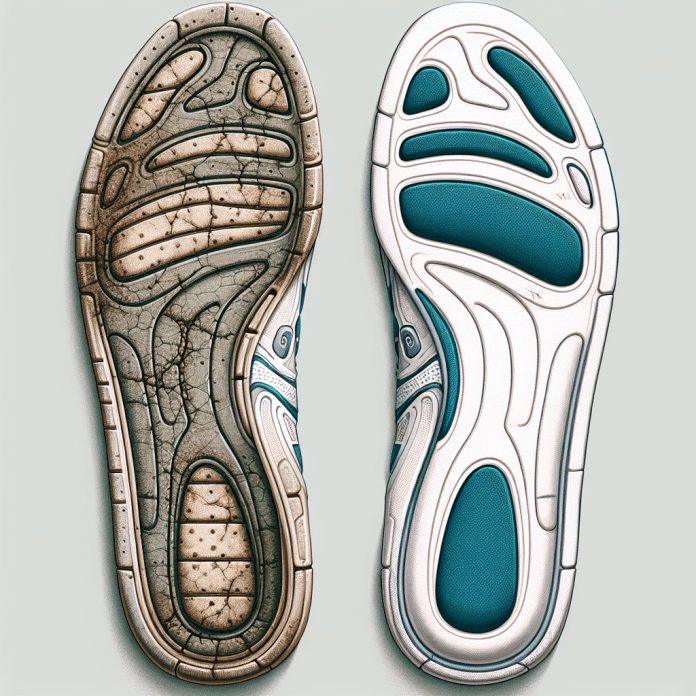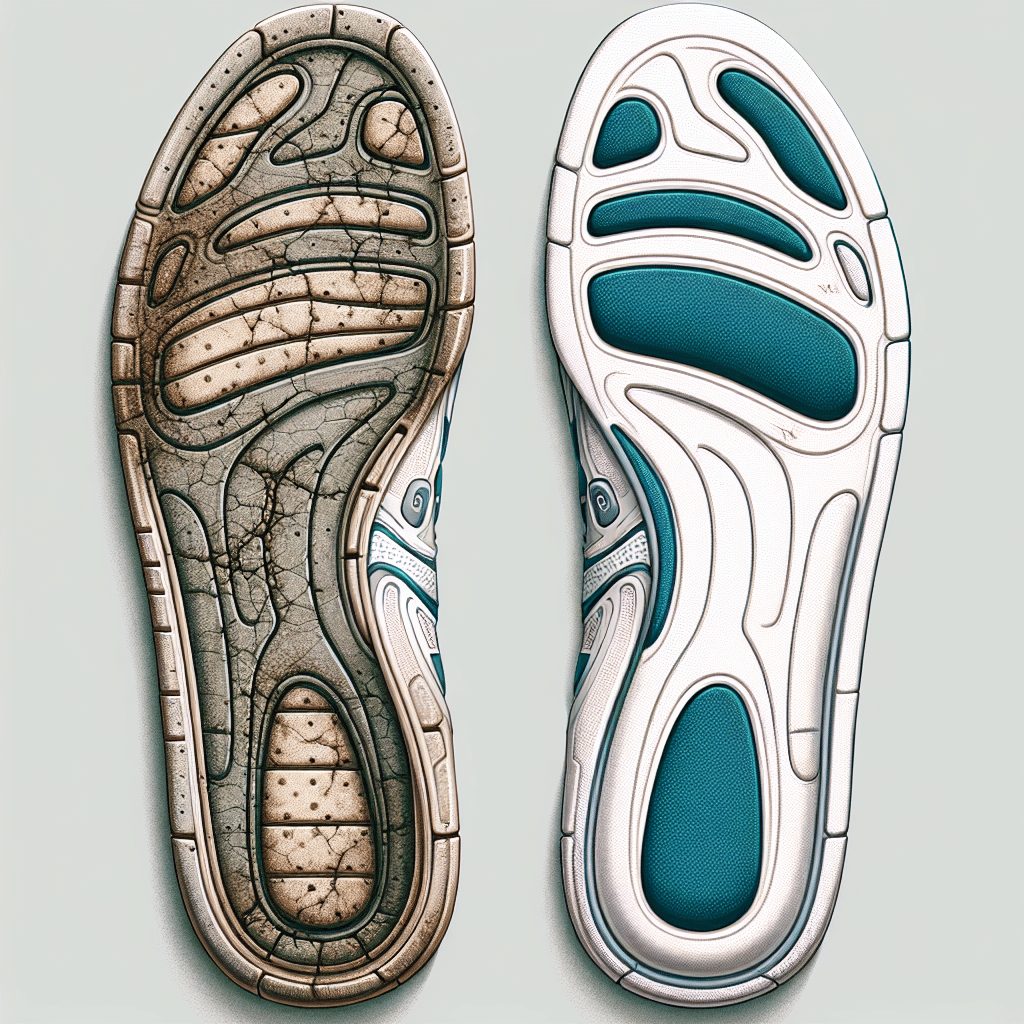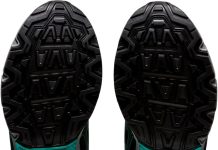If you’ve ever wondered how often you should replace your insoles, you’re not alone. The debate surrounding the optimal timeframe for swapping out these footbeds has left many unsure about the best approach. Some claim that every six months is the magic number, while others argue that once a year is sufficient. This article aims to shed some light on this age-old question, providing you with helpful insights to make an informed decision about your insole maintenance routine.
Benefits of using insoles
Improved foot comfort
Using insoles can greatly improve foot comfort. They provide an additional layer of cushioning and support to the feet, which helps in reducing discomfort caused by long periods of standing or walking. Insoles are designed to conform to the shape of your feet, providing a custom fit that enhances overall comfort.
Reduced foot and ankle pain
Many people experience foot and ankle pain due to various factors such as high impact activities, improper footwear, or medical conditions like plantar fasciitis or flat feet. Insoles can help alleviate this pain by providing additional support and reducing the pressure on specific areas of the foot. They can also help in distributing weight evenly, reducing strain on the joints and ligaments.
Enhanced balance and stability
Insoles can greatly improve balance and stability, especially for individuals with weak or unstable ankles. They provide additional support and help align the foot properly, reducing the risk of falls or injuries. This is particularly beneficial for athletes or individuals who engage in activities that require precise footwork and balance.
Prevention of foot conditions
Using insoles can help prevent various foot conditions from developing or worsening. They can provide arch support, which helps in preventing conditions like flat feet or plantar fasciitis. Insoles can also help correct gait abnormalities and improve alignment, reducing the risk of issues such as bunions or hammertoes. By providing proper cushioning and support, insoles can also prevent the formation of corns or calluses.
Factors affecting insole lifespan
Quality of materials
The quality of materials used in an insole greatly affects its lifespan. Insoles made from high-quality materials are likely to last longer and provide better support. Look for insoles made from durable materials like memory foam or EVA foam, as they tend to offer greater longevity and resilience.
Usage frequency and intensity
How often and how intensely you use your insoles can impact their lifespan. If you frequently engage in high impact activities such as running or jumping, your insoles may wear out more quickly compared to someone who uses them for regular daily activities. Similarly, if you wear your insoles for extended periods of time each day, they may experience more wear and tear.
Body weight and foot pressure
Your body weight and foot pressure can also play a role in the lifespan of your insoles. Those with higher body weight or those who exert more pressure on their feet while walking or running may find that their insoles wear out faster. This is because the extra weight or pressure can compress the insole material, leading to decreased cushioning and support.
Proper care and maintenance
Proper care and maintenance of insoles can significantly prolong their lifespan. Following the manufacturer’s instructions for cleaning and drying the insoles is important to prevent the build-up of odor-causing bacteria or fungal growth. Additionally, storing the insoles in a cool and dry place when not in use can help preserve their integrity.
Signs that insoles need replacement
Visible wear and tear
One of the most obvious signs that your insoles need to be replaced is visible wear and tear. If you notice holes, cracks, or significant thinning in the material of the insole, it’s time to invest in a new pair. Visible wear and tear can indicate that the insole is no longer providing the necessary support and cushioning for your feet.
Loss of support or cushioning
If you feel like your insoles are no longer providing the same level of support or cushioning as when you first started using them, it may be a sign that they need replacement. Over time, the material in the insoles can compress or break down, resulting in decreased effectiveness. If you notice a significant decrease in comfort or support, it’s likely time to replace your insoles.
Increased foot discomfort
Another sign that your insoles need replacement is if you experience increased foot discomfort while wearing them. If you start to feel more pain, pressure, or discomfort in your feet, it could be a sign that the insoles have worn out or are no longer suitable for your needs. Replacing them with a new pair can help relieve foot discomfort and prevent further issues.
Foul odor or bacterial growth
If your insoles start to emit a foul odor or show signs of bacterial or fungal growth, it’s important to replace them. The accumulation of odor-causing bacteria and fungi can lead to foot infections or unpleasant smells. Regularly cleaning and maintaining your insoles can help prevent this issue, but once it occurs, replacement is necessary for foot health and hygiene.
Replacing insoles every 6 months
Benefits of more frequent replacements
Replacing insoles every 6 months can provide several benefits. Firstly, it ensures that you always have fresh and effective insoles that provide the necessary support and cushioning for your feet. Insoles can wear out over time, and more frequent replacements help maintain their efficacy. This is particularly important for individuals with certain foot conditions or those who engage in high impact activities regularly.
Ideal for individuals with foot conditions
Individuals with foot conditions such as plantar fasciitis or flat feet may benefit from more frequent insole replacements. Conditions like these require consistent and proper support, and fresh insoles every 6 months can ensure that their feet receive the necessary care. Regular replacements can help manage symptoms and prevent further complications.
Promotes optimal foot health
Replacing insoles every 6 months promotes optimal foot health by providing continuous support and cushioning. As insoles age and wear down, they may no longer provide the intended benefits and can actually contribute to foot discomfort or other issues. Fresh insoles help maintain proper alignment, reduce strain on the feet, and promote overall foot health.
Can be costly in the long run
While more frequent insole replacements offer benefits, it’s important to consider the cost implications. Replacing insoles every 6 months can be costly in the long run, especially if you opt for high-quality or custom-made insoles. It’s essential to weigh the potential benefits against the financial investment and determine what works best for your specific situation.
Replacing insoles yearly
Suitable for regular foot conditions
For individuals with regular foot conditions or concerns, replacing insoles yearly may be sufficient. Regular foot conditions refer to issues like mild pronation or arch discomfort, which may not require as frequent replacements. Yearly replacements provide a good balance between cost-effectiveness and maintaining foot health.
Good balance between cost and effectiveness
Replacing insoles yearly strikes a good balance between cost and effectiveness. It allows for gradual wear and adaptation of new insoles while still ensuring that the feet receive adequate support and cushioning. For individuals without specific foot concerns or those with mild discomfort, yearly replacements can be an appropriate choice.
Allows for gradual wear and adaptation
Yearly replacements allow for gradual wear and adaptation of new insoles. As the feet get accustomed to the support and cushioning provided by the insoles, they can effectively adapt and maintain proper alignment. This gradual wear can help prevent discomfort and ensure a comfortable fit over an extended period.
Professional recommendations
Podiatrists’ view on insole replacement
Podiatrists recommend replacing insoles based on individual needs and foot conditions. They consider factors such as the severity of foot issues, lifestyle, and activity levels when determining the optimal replacement timeframe. Some patients may benefit from more frequent replacements, while others may find yearly replacements sufficient. Consulting a podiatrist can provide personalized advice and recommendations.
Orthopedists’ perspective on timing
Orthopedists also take individual factors into account when suggesting insole replacement timing. They consider factors such as foot structure, gait abnormalities, and any underlying musculoskeletal conditions. Orthopedists may recommend more frequent replacements for individuals with specific foot conditions or those who engage in high impact activities regularly. However, for individuals without significant foot issues, yearly replacements may be sufficient.
Fitness experts’ advice for athletes
Fitness experts often emphasize the importance of insole replacements for athletes or individuals involved in high impact activities. Athletes typically put more strain on their feet and require consistent support and cushioning. Therefore, more frequent replacements, such as every 6 months, may be recommended to ensure optimal performance and reduce the risk of injuries.
Individual factors to consider
Activity level and type
Your activity level and the type of activities you engage in can influence the frequency of insole replacements. High impact activities like running or jumping may require more frequent replacements compared to daily activities with less foot stress. Individuals who have a more active lifestyle or participate in sports should consider more regular insole replacements to maintain optimal foot support.
Foot sensitivity and pain tolerance
Individuals with higher foot sensitivity or lower pain tolerance may benefit from more frequent insole replacements. A fresh pair of insoles can provide the necessary cushioning and support to alleviate discomfort and prevent pain. Those who experience foot pain easily or are more sensitive to pressure may find that yearly replacements do not provide enough support and may require more frequent replacements.
Foot shape and arch type
Foot shape and arch type can also influence insole replacement frequency. Individuals with flat feet or excessively high arches may require more frequent replacements to maintain proper alignment and support. Insoles that are specifically designed for different arch types can provide customized support and help prevent issues associated with improper foot posture.
Weight distribution and gait
Weight distribution and gait abnormalities can impact the lifespan of insoles. Individuals with uneven weight distribution or abnormal gait patterns may experience increased wear and tear on the insoles. More frequent replacements may be necessary to ensure that the insoles continue to provide effective support and cushioning.
Proper insole care practices
Regular cleaning and drying
Regularly cleaning and drying insoles is essential to maintain their integrity. Follow the manufacturer’s instructions for cleaning, which typically include using mild soap and water. Properly drying the insoles after cleaning helps prevent bacterial or fungal growth. It’s important to avoid submerging the insoles in water for extended periods, as this can damage the materials.
Proper storage when not in use
When not in use, insoles should be stored properly to help preserve their shape and effectiveness. Avoid leaving them in areas with high heat or direct sunlight, as this can cause the materials to deteriorate. It’s best to store insoles in a cool and dry place, away from moisture or extreme temperatures.
Avoidance of extreme temperatures
Extreme temperatures can negatively impact insole lifespan. High temperatures can cause the materials to warp or break down, while extremely cold temperatures can make the insoles stiff and less comfortable. It’s important to avoid exposing insoles to extreme temperatures as much as possible.
Replacement of insole covers if applicable
Some insoles come with removable covers that can be washed separately. If applicable, it’s recommended to replace the covers periodically or as needed. The covers can accumulate sweat, dirt, and odor-causing bacteria, which can affect foot hygiene and comfort. Regularly replacing or cleaning the covers can help maintain freshness and cleanliness.
Consulting a healthcare professional
Importance of personalized advice
Consulting a healthcare professional, such as a podiatrist or orthopedist, is crucial for personalized advice. They can assess your specific foot needs, provide a diagnosis or treatment plan for any underlying issues, and recommend the most suitable insole replacements. Personalized advice ensures that you make informed decisions regarding insole replacement timing.
Diagnosis of underlying foot issues
Through consultation with a healthcare professional, underlying foot issues can be diagnosed. Some foot conditions may require more frequent insole replacements, while others may require custom-made insoles or orthotics. An accurate diagnosis helps in determining the most appropriate replacement timing and type of insoles to optimize foot health.
Custom-made insoles or orthotics
Healthcare professionals may recommend custom-made insoles or orthotics for individuals with specific foot conditions or abnormalities. These specialized insoles are designed to provide tailored support and cushioning, targeting specific areas of concern. Custom-made insoles typically have a longer lifespan and may require less frequent replacements compared to off-the-shelf options.
Recommendation for specific replacements
Healthcare professionals can provide specific recommendations for insole replacements based on their expertise and knowledge of your individual case. They consider factors such as foot structure, activity level, and lifestyle to determine the most suitable replacement timing and type of insoles. Following their recommendations can help ensure optimal foot health and comfort.
Summary and conclusion
Using insoles offers numerous benefits, including improved foot comfort, reduced foot and ankle pain, enhanced balance and stability, and prevention of foot conditions. The lifespan of insoles is influenced by factors such as the quality of materials, usage frequency and intensity, body weight and foot pressure, as well as proper care and maintenance. Signs that insoles need replacement include visible wear and tear, loss of support or cushioning, increased foot discomfort, and foul odor or bacterial growth. Replacing insoles every 6 months offers benefits like more frequent support, suitability for individuals with foot conditions, promotion of optimal foot health, but it may be costly in the long run. On the other hand, replacing insoles yearly provides a good balance between cost and effectiveness, allows for gradual wear and adaptation, and is suitable for regular foot conditions. Professional recommendations from podiatrists, orthopedists, and fitness experts can provide valuable insights on insole replacement timing, while individual factors such as activity level, foot sensitivity and pain tolerance, foot shape and arch type, as well as weight distribution and gait should also be considered. Proper insole care practices, including regular cleaning and drying, proper storage, avoidance of extreme temperatures, and replacement of insole covers if applicable, can prolong the lifespan of insoles. Consulting a healthcare professional is important to receive personalized advice, ensure proper diagnosis of underlying foot issues, explore custom-made insoles or orthotics, and receive specific recommendations for insole replacements. Overall, choosing the right replacement timing and following proper care practices can contribute to optimal foot health and comfort.









































